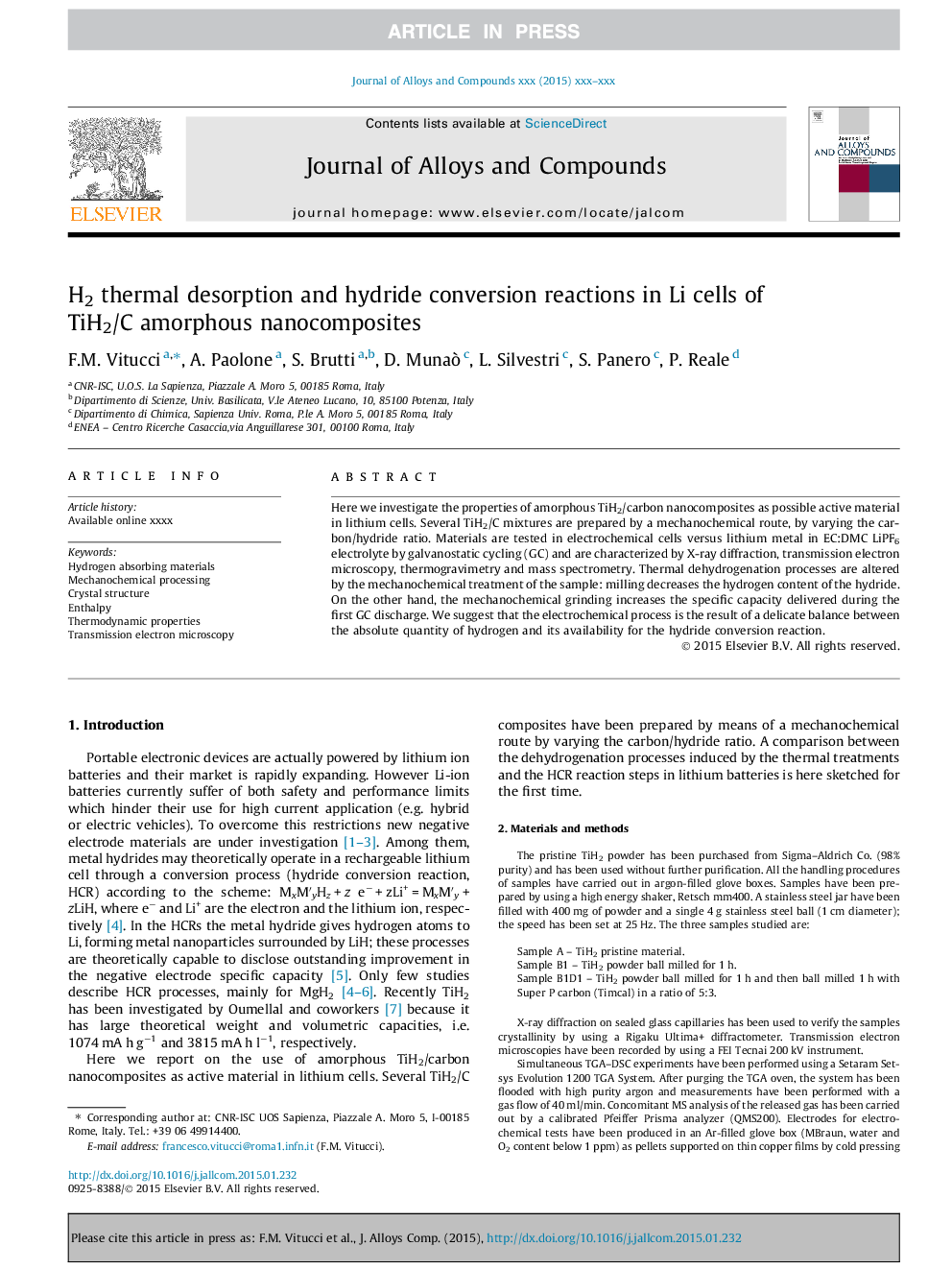| Article ID | Journal | Published Year | Pages | File Type |
|---|---|---|---|---|
| 1608712 | Journal of Alloys and Compounds | 2015 | 5 Pages |
Abstract
Here we investigate the properties of amorphous TiH2/carbon nanocomposites as possible active material in lithium cells. Several TiH2/C mixtures are prepared by a mechanochemical route, by varying the carbon/hydride ratio. Materials are tested in electrochemical cells versus lithium metal in EC:DMC LiPF6 electrolyte by galvanostatic cycling (GC) and are characterized by X-ray diffraction, transmission electron microscopy, thermogravimetry and mass spectrometry. Thermal dehydrogenation processes are altered by the mechanochemical treatment of the sample: milling decreases the hydrogen content of the hydride. On the other hand, the mechanochemical grinding increases the specific capacity delivered during the first GC discharge. We suggest that the electrochemical process is the result of a delicate balance between the absolute quantity of hydrogen and its availability for the hydride conversion reaction.
Keywords
Related Topics
Physical Sciences and Engineering
Materials Science
Metals and Alloys
Authors
F.M. Vitucci, A. Paolone, S. Brutti, D. Munaò, L. Silvestri, S. Panero, P. Reale,
